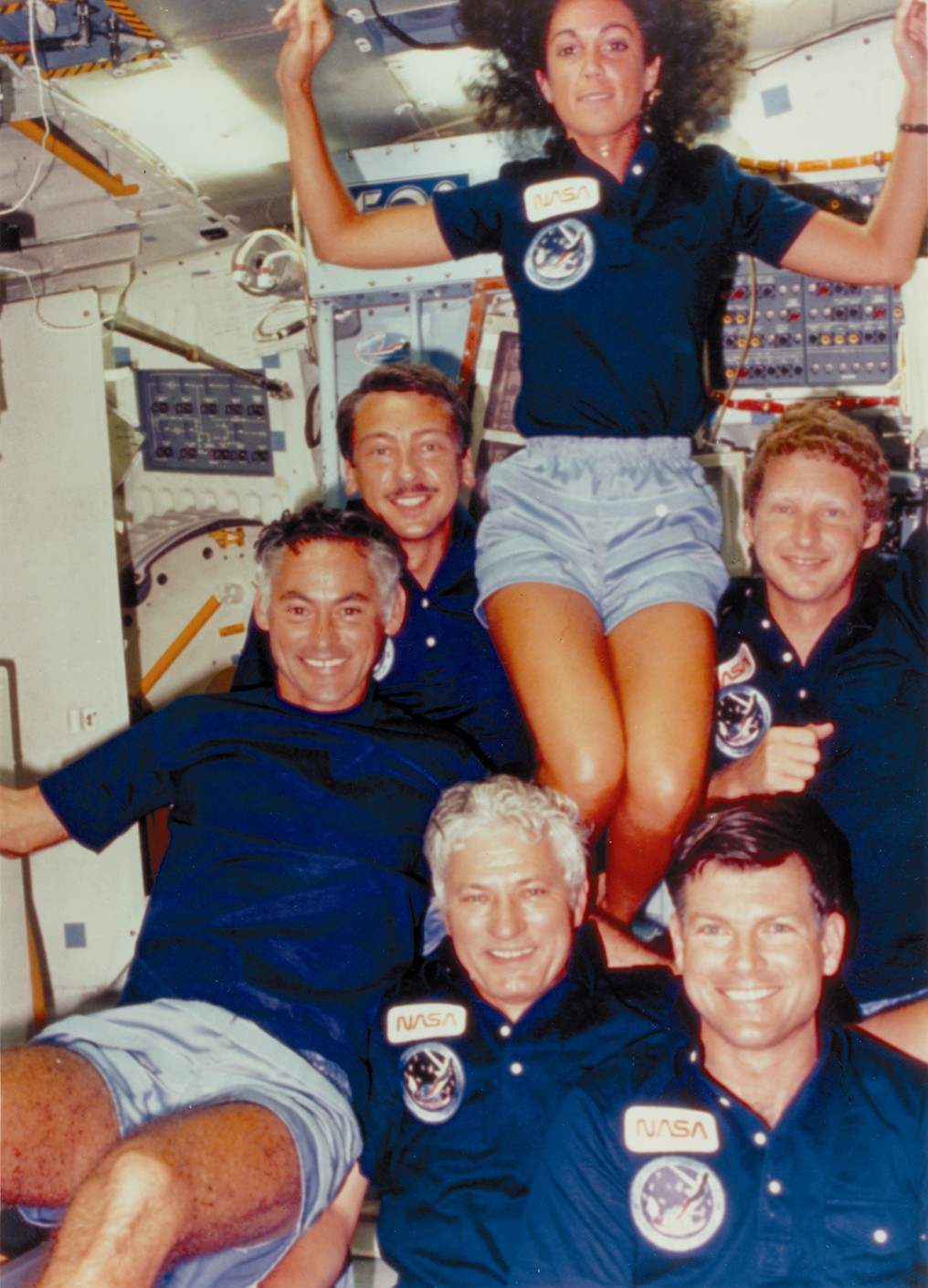Space History Photo: STS-41D Crew Enjoying Space

In this historical photo from the U.S. space agency, crewmembers of NASA's Space Shuttle mission STS-41-D, aboard the Discovery orbiter, take a group shot during a moment of fun in space.
Crewmembers are (counter-clockwise from center) crew commander Henry W. Harsfield Jr., pilot Michael L. Coats, mission specialist Steven A. Hawley, mission specialist Judith A. Resnik, payload specialist Charles D. Walker, and mission specialist Richard M. Mullane. In this photograph taken Sept. 6, 1984, Dr. Judith Resnik is shown enjoying the weightlessness of space during her first mission.
Three satellites deployed during this mission: Satellite Business System SBS-D, SYNCOM IV-2 (also known as LEASAT2) and TELSTAR. The 102-foot-tall, 13-foot-wide Office of Application and Space Technology (OAST-1) solar wing extended from the payload bay. The wing carried different types of solar cells and extended to its full height several times. It demonstrated large lightweight solar arrays for a future in building large facilities in space such as a space station.
Each weekday, SPACE.com looks back at the history of spaceflight through photos (archive).
Get the Space.com Newsletter
Breaking space news, the latest updates on rocket launches, skywatching events and more!
Join our Space Forums to keep talking space on the latest missions, night sky and more! And if you have a news tip, correction or comment, let us know at: community@space.com.

The National Aeronautics and Space Administration (NASA) is the U.S. government agency in charge of the civilian space program as well as aeronautics and aerospace research. Founded in 1958, NASA is a civilian space agency aimed at exploring the universe with space telescopes, satellites, robotic spacecraft, astronauts and more. The space agency has 10 major centers based across the U.S. and launches robotic and crewed missions from the Kennedy Space Center in Cape Canaveral Florida. It's astronaut corps is based at the Johnson Space Center in Houston. To follow NASA's latest mission, follow the space agency on Twitter or any other social channel, of visit: nasa.gov.









